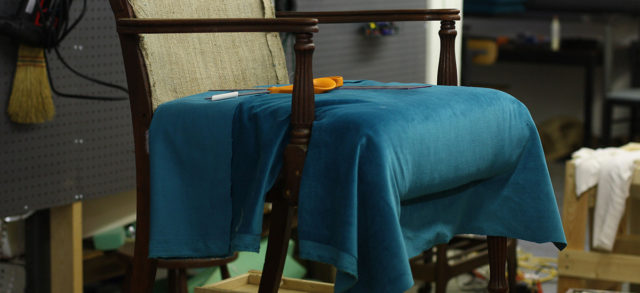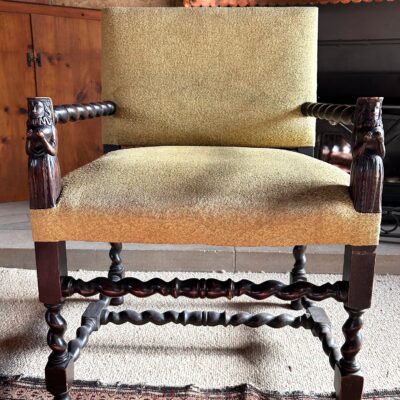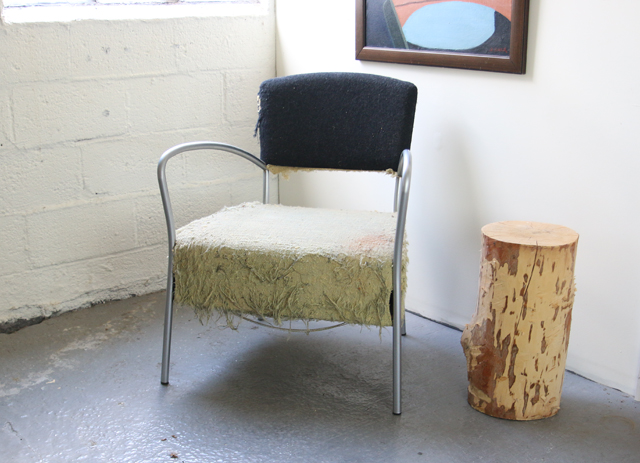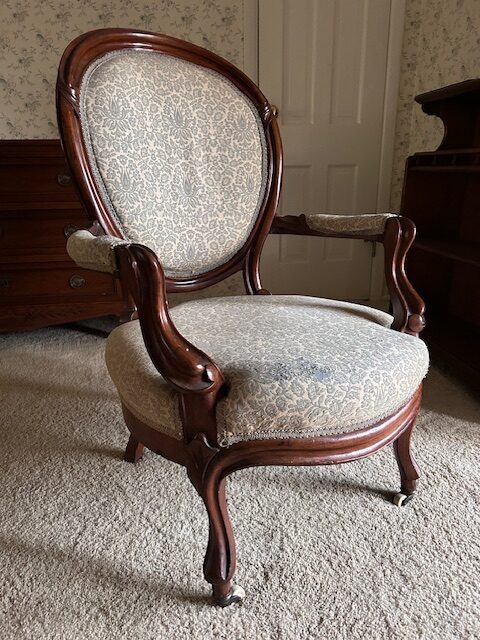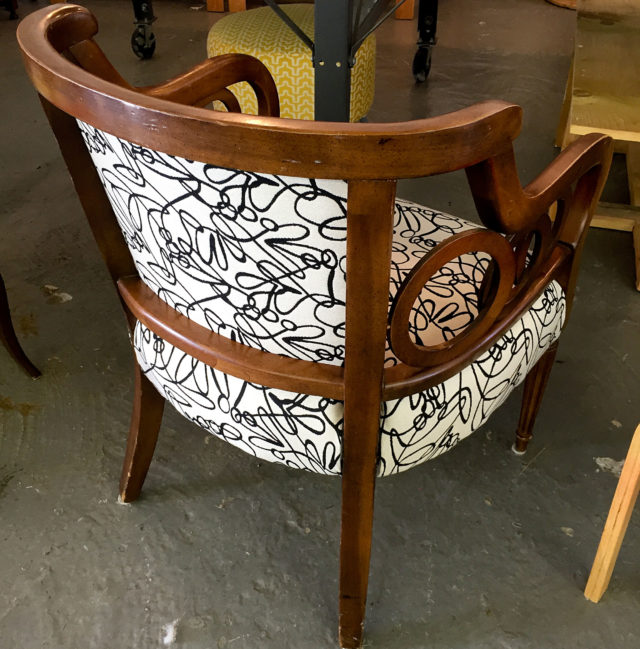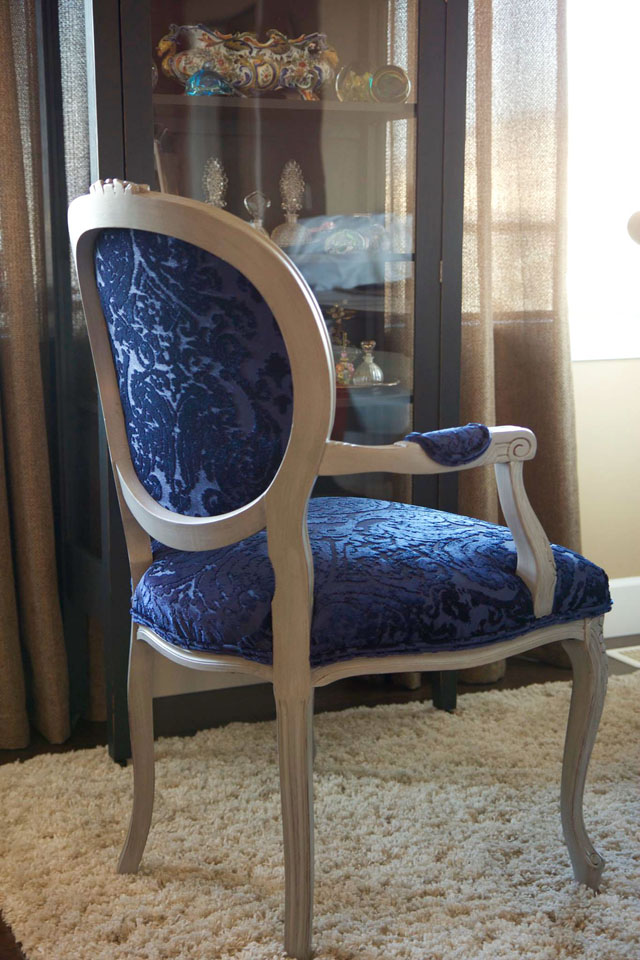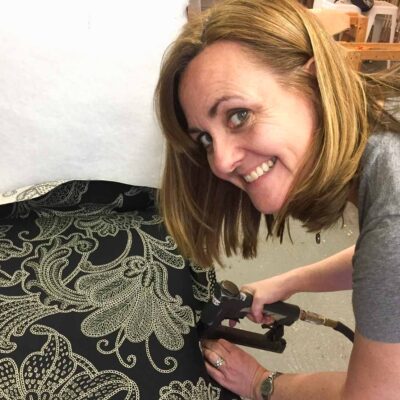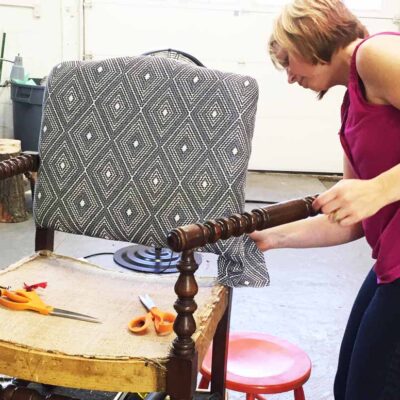Description
4 + 1 makeup session if needed | TBD| Time TBD
Instructor: Shelly Miller Leer
Cost: $300.00Materials: You bring: chair, foam, fabric and extra embellishments
Spaces available: 5
Meets: March 4th, 12th, 18th, and April 8th
Are you ready to break those bad upholstery habits you’ve picked up from Pinterest, reading blogs, trying to muddle your way through You Tube videos, or figure out what they’re doing in a book tutorial.
At HomeRoom, formerly ModHomeEc, you learn proper techniques and skills that can be applied to any and all of the upholstery projects you tackle. I don’t support slipshod, uneducated fixes. We’ll do it right. Upholstery isn’t for sissies. You’ll work up a sweat, discover how to problem solve, suck it up and do the hard work. You’ll be so tired of removing old staples and old fabric, your hands will be sore and you’ll be disgusted by some of the dirt and grime you find under the ‘covers’. It’s deliciously gritty, grimy and satsifying. Upholstery is a skill that separates the women from the girls?! If you think you can do it, then read on.
After you sign up, you’ll need to find a chair. And not just any chair. You’ll need to get your chair approved at least two weeks prior to class. You’ll start with an open armed side chair. If you don’t know what that is, then email me, or look at the picture here of this child sized rocker. It’s an open armed side chair. Seat, Inside and Outside back upholstered. As we work through the tear and upholstery process, you’ll learn how to determine fabric yardage, choose appropriate upholstery fabric, get familiar with upholstery tools, tear it down (remove the old upholstery fabric), make simple repairs, re-pad and reupholster. Professional tips and shortcuts will be covered in order to keep you interested, eager, and excited to keep upholstering. You’ll build it back up using professional upholstery techniques adapted to you skill level. You’ll never be sorry you learned these skills. In fact, you can save hundreds and hundreds of dollars reupholstering your own chairs (once you get good–it doesn’t happen with just one chair, but you have to get started in order to get good!)
Students are expected to listen and learn how to upholster correctly, not like you’ve done at home in your garage. When students think they know, but they don’t, it can cause frustration and eventual heartbreak throughout the process.
Start out like a blank canvas, be ready to learn specific skills, sometimes counter-intuitively to how you might think it should be done. If you watch, listen, and try, you’ll have success and enjoy the satisfaction of a well done job.
NOTE: As mentioned above, ALL chairs must be approved before class. I will make the determination whether your chair will be allowed. Don’t think I’m being a grump if I say you need to find a different chair. Once you’re in class, you’ll see how necessary this is. Don’t be upset, trust me that your class flows better when everyone follows these guidelines.
***This class is for ONE chair only. Don’t bring in a second chair. You can work on a second chair at home while you’re learning in class.
THIS IS EXTREMELY IMPORTANT:
Read our policy and click below to reserve your space in our next session.
**We have 4 regularly scheduled classes and then, if you have to miss a class, I’ll hold one additional class at the end of the session. If you have to miss more than one class, You can schedule a makeup class for an additional $50.00.
MATERIALS: I provide use of all tools, safety equipment, a sewing machine, thread, twine, tacks, staples, cardboard tack strip, spray adhesive, wood glue, use of clamps, use of sandpaper, use of steel wool, pins, scissors, chalk, nylon cord, upholsterers’ sewing twine
Students provide:
chair, foam, paint or stain, fabric, any extra embellishments
To fully understand the use, cutting and cost of upholstery supplies, whether you’re a hobbyist, or are planning your own business, it’s important to measure a bunch of times before cutting materials. When you cut things too small, that’s wasted material. Always get the OK before cutting into webbing, burlap, dacron, dust cover material, twine, etc.
MORE EXAMPLES:

